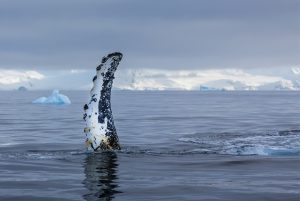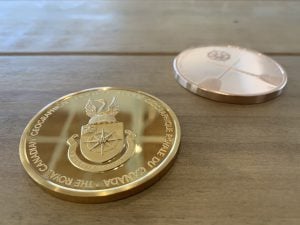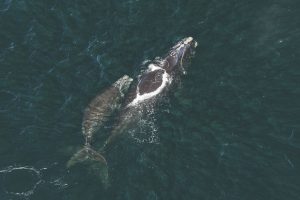
People & Culture
On thin ice: Who “owns” the Arctic?
As the climate heats up, so do talks over land ownership in the Arctic. What does Canadian Arctic Sovereignty look like as the ice melts?
- 4353 words
- 18 minutes
Science & Tech
How Wildlife Conservation Society Canada researchers are working to identify possible collision areas between ships and whales using satellite data

We have all seen those signs about the need to reduce speed in school safety zones: flashing speed indicators, road bumps, lawn signs etc. These measures aren’t deployed around schools randomly. We know these are critical areas where we need to control traffic to keep children safe, so why can’t we do the same for marine life?
Wildlife Conservation Society Canada (WCS) researchers are proposing a similar approach for whales in Canada’s Arctic Ocean to prevent collisions with marine life. They have used data collected on whale and ship movements to identify the highest potential conflict areas in this fast-changing ocean environment. Using satellite data automatically generated by many ships moving through the Arctic (Automatic Identification System – AIS) and both telemetry data from tagged bowhead whales and aerial survey data, they have zeroed in on five areas with the highest risk for collisions for bowhead whales: Cumberland Sound, Isabella Bay, Gulf of Boothia, Tuktoyaktuk, and Utqiagvik, Alaska.
Ship traffic is steadily growing in the Arctic because vanishing summer sea ice is making it safer and more accessible for large vessels to transit the fabled Northwest Passage and other parts of the Arctic Ocean. According to NASA, Arctic summer sea ice has been shrinking by 12.6 per cent per decade since the early 1980s and is now approaching half of the area covered in 1980 in summer and early fall. Just as importantly, older ice is quickly melting away, meaning the core ice coverage that once made navigation difficult is vanishing fast.

This is great news for shippers, who can significantly cut travel distances for ships between Europe and Asia by threading their way through the Arctic rather than taking more conventional southern routes. But it is bad news for whales inhabiting one of Earth’s quietest and most pristine oceans. Increased ship traffic brings noise that disrupts whale communications and increases the direct risk of collisions between whales and ships. Noise may also indirectly raise collision risk by interfering with whales’ use of sound for navigation and communication.
Of course, climate change is already having many other impacts on Arctic whales, including potentially changing the availability of food supplies and creating a naturally noisier environment thanks to more wind and waves and less ice.
All of these factors – less ice, more ships, more noise – make this the ideal time to get out ahead of the growing problems for whales and take steps to reduce risks like the possibility of collisions. Only two of the five hotspots identified by WCS Canada scientists have vessel management measures in place. The area near Tuktoyaktuk is within a voluntary slowdown zone, and the area near Isabella Bay includes the Ninginganiq National Wildlife Area, which strictly manages and limits ship traffic. However, the offshore portion at Isabella Bay outside the National Wildlife Area remains unprotected. The other hotspots that our study identified, including Cumberland Sound, Gulf of Boothia, and Utqiaġvik, currently have no special vessel management measures in place.
Instead of waiting until we see a growing problem with collisions or whales abandoning core habitat areas, we should be looking at putting in place measures like well-defined shipping corridors that keep ships away from whale core use areas as much as possible and vessel slowdowns for areas where whales are likely to be in close proximity. Lower ship speeds, like lower automobile speeds, reduce the collision risk by increasing safety margins. In short, slower-moving ships produce less noise and give whales more time to react safely to a ship’s movements.
To help paint a picture of these high-priority conflict zones, WCS Canada has produced an online story map with interactive maps demonstrating areas frequented by whales, routes travelled by ships, and the overlap between these. The maps also let viewers explore the types of vessels that pose the most significant risk in each area and strike threat in different times of the year.
We certainly hope that Canada and other countries will do everything they can to slow global heating and reduce sea ice loss in the Arctic. But we also have to prepare for an Arctic Ocean that could be ice-free in summer as soon as 2035. We owe it to whales to keep traffic under control in their neighbourhoods.
Are you passionate about Canadian geography?
You can support Canadian Geographic in 3 ways:

People & Culture
As the climate heats up, so do talks over land ownership in the Arctic. What does Canadian Arctic Sovereignty look like as the ice melts?

Environment
Ten years after the release of her seminal book Sea Sick, Alanna Mitchell again plumbs the depths of the latest research on the health of the world’s oceans — and comes up gasping

People & Culture
Award recipients honoured in the first virtual Annual General Meeting and Fellows Show.

Wildlife
After a series of mass deaths in recent years, what can we do?